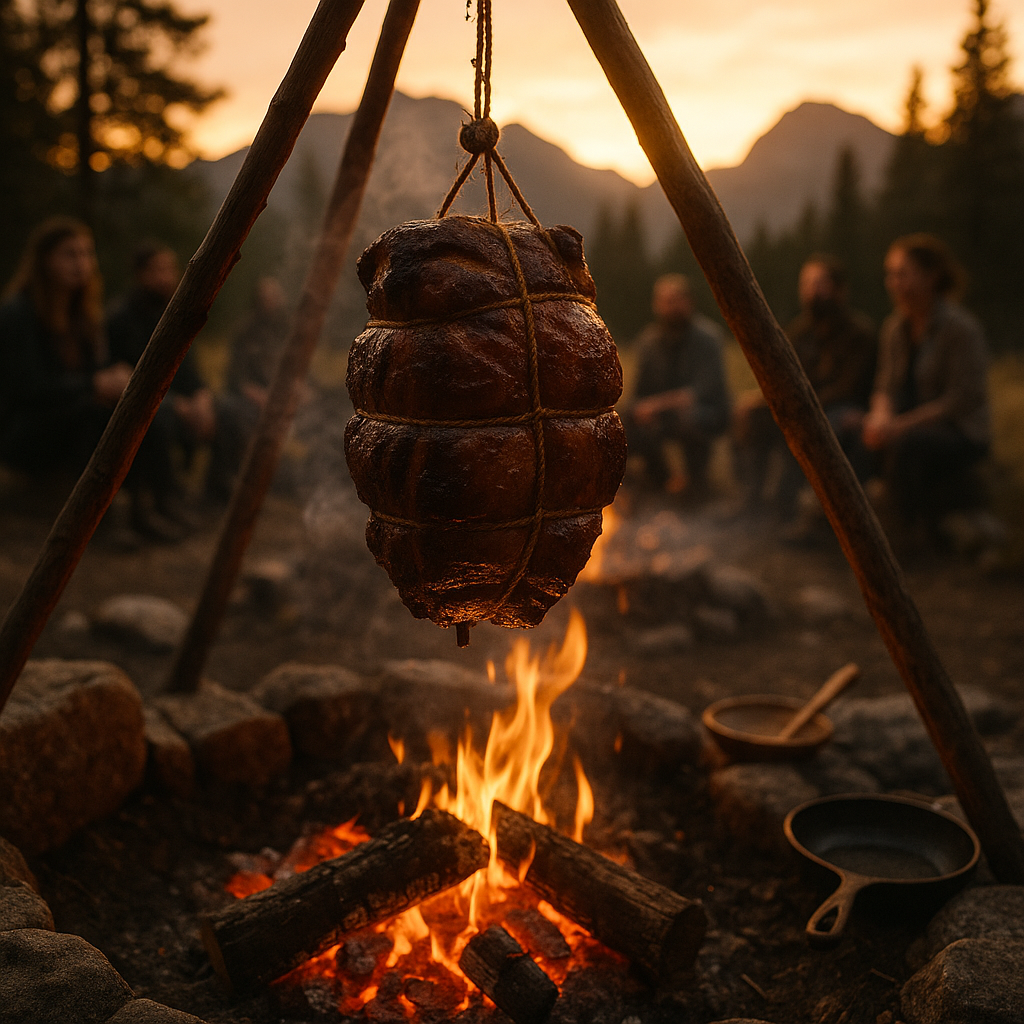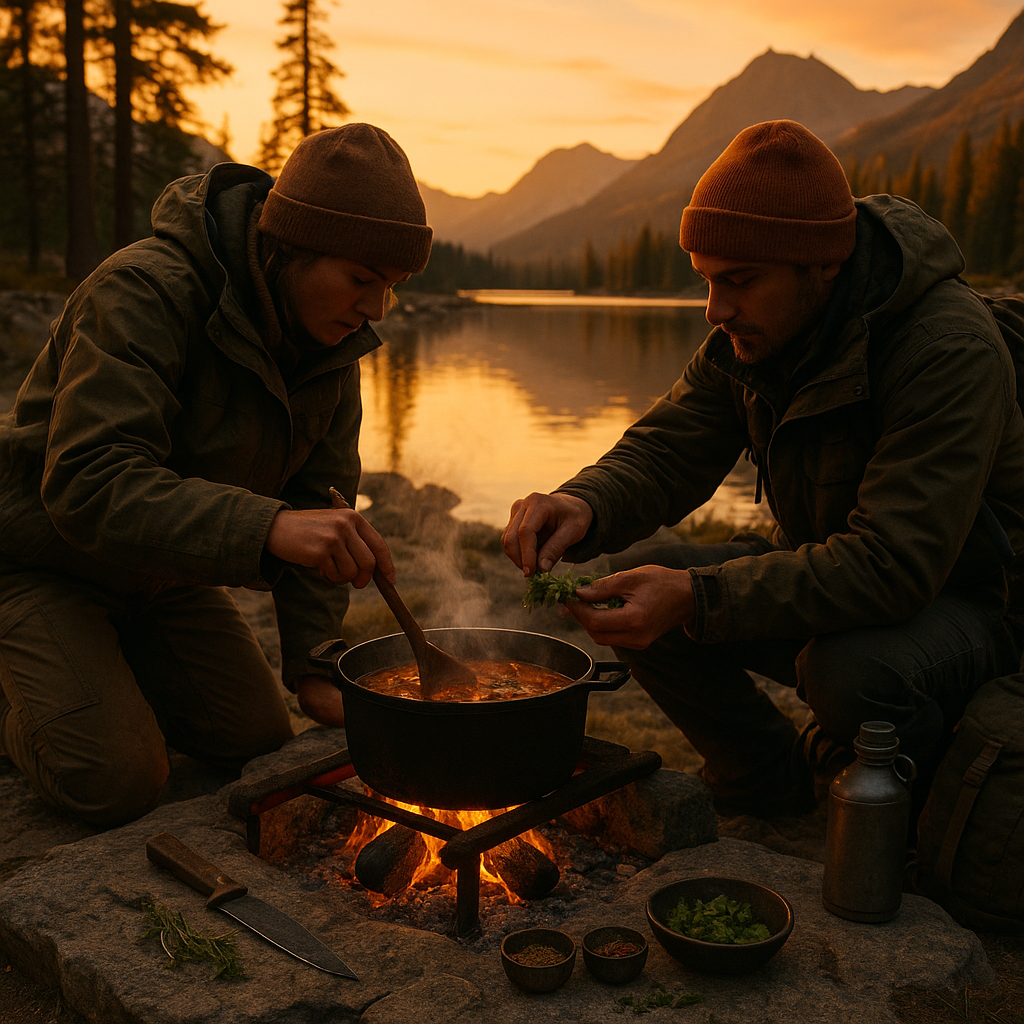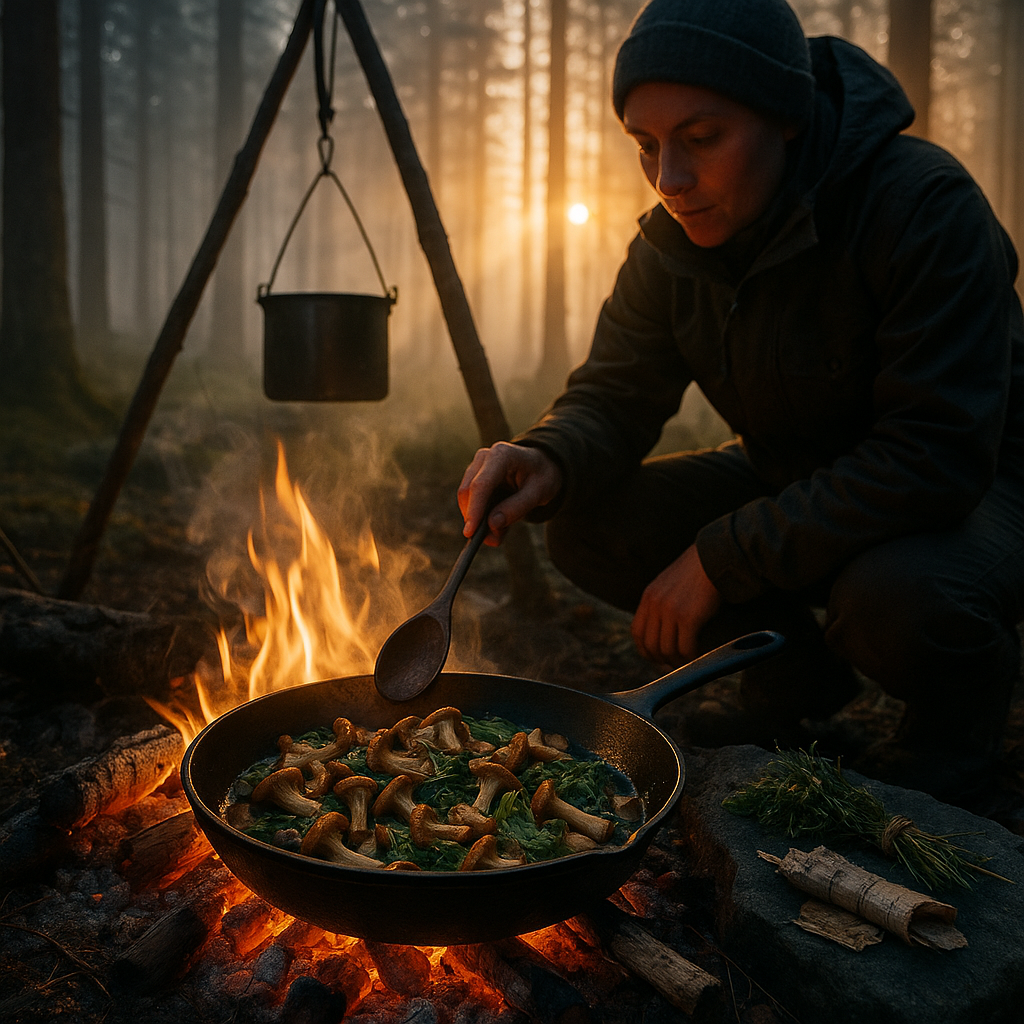Key Takeaways
- Heat zones unlock versatility. By creating distinct zones of high, medium, and low heat, you can cook multiple ingredients at once, seamlessly moving between searing, grilling, and slow-roasting over the same fire.
- Sensory cues refine your fire mastery. The crackling of wood, the rich color of flames, and the unfolding aromas from burning fuel are real-time guides, inviting you to balance instinct with skill for temperature control.
- Wood type impacts temperature precision. Dense hardwoods such as oak and maple burn longer and hotter, giving steady heat, while fruit woods bring gentle flavors and softer heat, and fast-burning softwoods spark quick fires for specific needs.
- Tools fine-tune temperature accuracy. Long-handled thermometers, sturdy cast iron pans, and simple ember-smoothing covers empower you to adjust and maintain the right heat, even as outdoor winds and weather shift.
- Overcome common challenges with strategy. Factors like gusty wind, shifting coals, or untamed flames can challenge any cook. Shield your fire, rake your embers for even heat, and add fuel judiciously to keep the cook steady and reliable.
- Flame management balances heat and timing. Letting flames die down to glowing embers produces consistent, radiant warmth. This is ideal for coaxing out the best flavors and achieving that golden, fire-kissed crust without burning.
- Temperature control enhances food texture and flavor. Skillful handling of heat brings out perfect crusts, tender interiors, and a tapestry of smoky notes that define the magic of open-fire cooking.
- Practice builds instinct and finesse. Continually tending fires, listening to their rhythms, and responding to their moods turns book knowledge into a sixth sense, deepening your connection to each ingredient and meal.
By blending practical fire management with a willingness to engage all your senses, you can transform open-fire cooking into a soulful art form. In the sections ahead, we will delve deeper into the science, timeless techniques, and quiet joys of this elemental way to prepare food, where nature, flavor, and memory come together by the flames.
Introduction
The true secret behind unforgettable open-fire cooking lies not only in crackling logs or fresh-picked ingredients, but in the nuanced dance of temperature control. Taming fire transforms raw wilderness meals into feasts lit by golden hour skies, letting you sear, grill, and slow-roast outdoors with confidence and artistry.
Mastering the warmth of the fire is a story written not just in embers, but in your heightened senses. It involves reading the poetry of moving flames, feeling the heat on your skin, and recognizing the subtle signals from split wood and glowing coal. It is here that technical skill and elemental instinct merge, turning simple ingredients into something memorable and deeply satisfying.
Let us embark on a journey through the foundations and finer details of fire temperature management, where every meal becomes part of a larger adventure and every flicker is an invitation to wonder.
Stay Sharp. Stay Ahead.
Join our Telegram Channel for exclusive content, real insights,
engage with us and other members and get access to
insider updates, early news and top insights.
 Join the Channel
Join the Channel
Foundations of Open-Fire Temperature Control
Building mastery at the fire begins with understanding its dynamic and ever-changing heat landscape. Every fire pit or campfire is more than just a pile of burning logs. It is a mosaic of hot spots, gentle warmth, and cool refuge for both food and cook. Identifying these zones allows you to manage multiple ingredients and techniques in concert.
The Three-Zone System
Imagine the fire as three concentric territories:
- Direct High Heat Zone: Directly over lively, leaping flames sits the hottest area of the fire, reaching 600–800°F (315–427°C). Here, searing and quick caramelization await.
- Indirect Medium Heat Zone: On the perimeter of mature, glowing coals (not in active flames), you find more moderate, steady warmth in the 450–550°F (232–288°C) range. This is your main wok for steady, consistent cooking.
- Cool Zone: At the far edges of the pit, away from the heat’s intensity, foods can rest, finish gently, or be rescued from overcooking.
Skilled cooks create and maintain these zones by thoughtful wood stacking and ember raking. The goal is not to fight the fire, but to collaborate, transferring food fluidly so each element cooks to perfection, with no hurried juggling required.
Fuel Fundamentals
Just as a painter selects their pigments, the choice of wood or charcoal shapes how your heat develops and sustains. Hardwood logs like white oak and hickory burn hot and slow, making them ideal for long cooking sessions or roasts. Maple gives medium-hot, steady heat; fruit woods such as apple or cherry burn a little cooler but add subtle sweet notes, making them prized for delicate proteins or baking.
For speedy fires, especially in brisk weather, softwoods ignite fast and burn hot; still, their smoky resins and rapid burn-out make them best for kindling, not for all-day cooking.
Key Temperature Indicators by Wood Type:
- Oak: Intense, long-lasting (800–1000°F); deep, steady coals for extended roasts or bread baking.
- Maple: Medium-hot (600–800°F); excellent for consistent grilling.
- Apple: Gentle, sweet-smoked (500–700°F); perfect for pork or desserts.
- Pine: Very hot, quick to burn, but generally avoided for direct cooking due to sap and unpredictable heat.
Sensory Engagement and Intuitive Heat Management
While thermometers and gadgets help, the ancient art of fire control begins with tuning into your senses. The fire speaks through color, movement, sound, and scent.
Visual Temperature Reading
Watch for these classic visual cues:
- White-blue base with flickering yellow tips: Optimal for most cooking. This means well-oxygenated, actively burning wood with clean energy.
- Deep, glowing coals: Steady medium heat, ideal for roasting or baking.
- Excessive gray-white smoke: Too much moisture or not enough air. Adjust to create a cleaner, hotter burn.
- Wavering, transparent heat lines above the grill: High heat zones. Watch your food closely here to avoid burning.
Auditory and Olfactory Signals
Close your eyes for a moment: Does the fire crackle in a gentle symphony? You’re in a sweet spot. Sudden sizzles or harsh pops might signal wet or sappy wood, or fuel burning unevenly. Breathe in. The aroma should be sweet or slightly nutty if using hardwood; any acrid, stinging smoke is a sign to adjust the fire or wood.
Techniques for Managing and Measuring Fire Temperature
Refining your touch with fire is part creativity, part tradition, and part science. While devices like infrared thermometers and cast iron pans can offer structure and consistency, true mastery welcomes both modern and time-honored strategies.
The “Hand Test” and Real-World Adjustments
Hold your palm (briefly and carefully) about six inches above the grill surface:
- 2 seconds: High heat (400–450°F). Good for searing.
- 4–5 seconds: Medium heat (350–375°F). Perfect for sustained cooking.
- 7+ seconds: Low heat (below 300°F). Ideal for slow-roasting or keeping food warm.
Active Management Techniques
- Coal Banking: Heap coals to one side for a steep temperature gradient, expanding your cooking options.
- Wind Breaking: Use logs or rock barriers to shield flames, stabilizing temperature even when breezes rise.
- Grate or Tripod Height Adjustment: Manipulate distance between food and heat with adjustable grills or hanging pots.
- Ember Distribution: Rake, spread, or concentrate your coals to adapt quickly to what each ingredient needs.
Deploying the right tool at the right moment, be it a sturdy cast iron skillet, a long-handled lid, or a digital thermometer, makes a world of difference, especially in variable conditions.
The Role of Wood Selection and Fuel Management
Selecting your wood is like choosing the partner for your meal; it sets the tempo and infuses the story with flavor. For feasts that last hours, like low-and-slow braised stews, dense hardwoods (oak, hickory, maple) are unrivaled for their stamina and steady warmth. For quick, lively meals such as charred fruit, flash-seared fish, or pizzette, look to apple or cherry for both intensity and nuanced aromatics.
Strategic Wood Selection
Align your fuel to your aspiration:
- Long, slow cooks: Oak, hickory, and maple deliver deep embers and stable temperatures





Leave a Reply